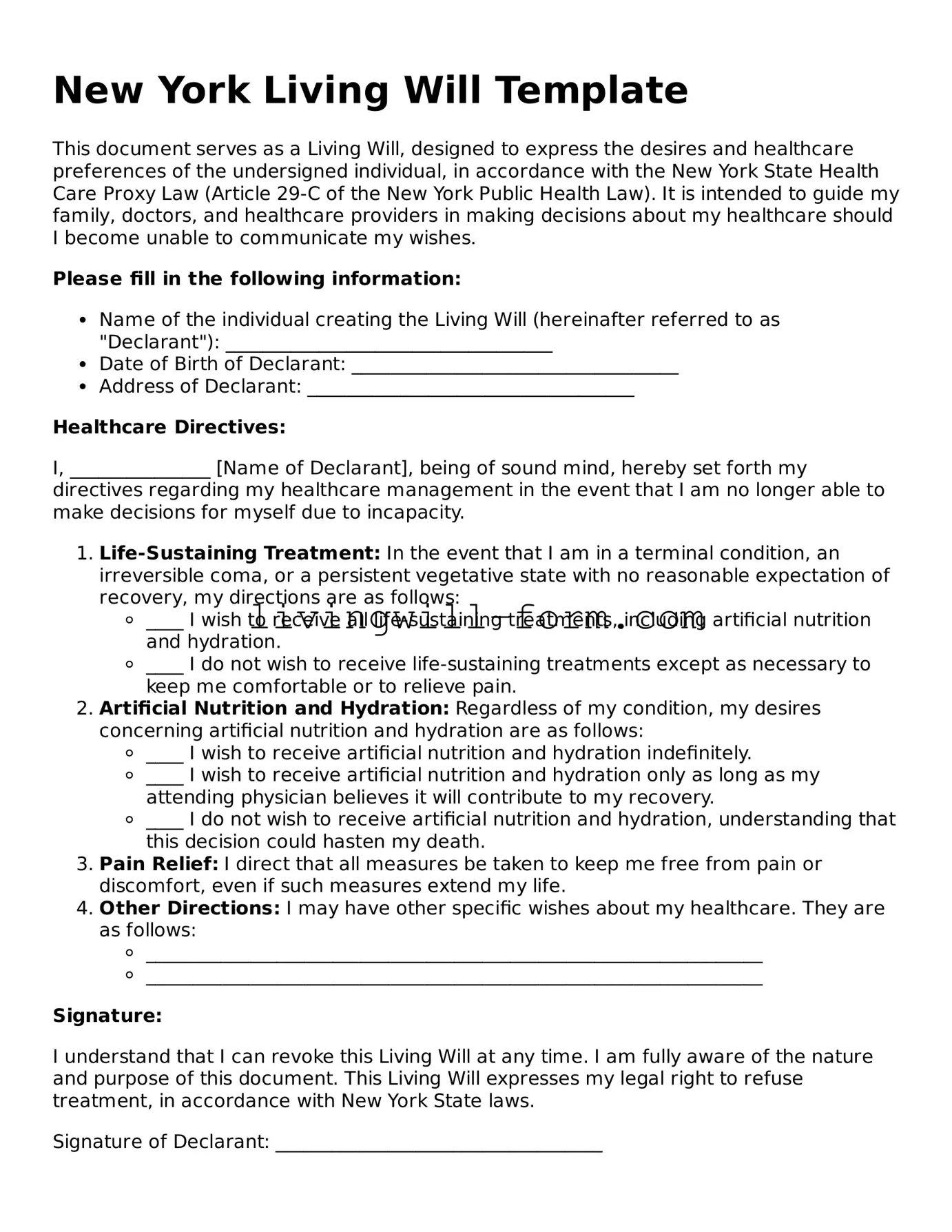New York Living Will Template
This document serves as a Living Will, designed to express the desires and healthcare preferences of the undersigned individual, in accordance with the New York State Health Care Proxy Law (Article 29-C of the New York Public Health Law). It is intended to guide my family, doctors, and healthcare providers in making decisions about my healthcare should I become unable to communicate my wishes.
Please fill in the following information:
- Name of the individual creating the Living Will (hereinafter referred to as "Declarant"): ___________________________________
- Date of Birth of Declarant: ___________________________________
- Address of Declarant: ___________________________________
Healthcare Directives:
I, _______________ [Name of Declarant], being of sound mind, hereby set forth my directives regarding my healthcare management in the event that I am no longer able to make decisions for myself due to incapacity.
- Life-Sustaining Treatment: In the event that I am in a terminal condition, an irreversible coma, or a persistent vegetative state with no reasonable expectation of recovery, my directions are as follows:
- ____ I wish to receive all life-sustaining treatments, including artificial nutrition and hydration.
- ____ I do not wish to receive life-sustaining treatments except as necessary to keep me comfortable or to relieve pain.
- Artificial Nutrition and Hydration: Regardless of my condition, my desires concerning artificial nutrition and hydration are as follows:
- ____ I wish to receive artificial nutrition and hydration indefinitely.
- ____ I wish to receive artificial nutrition and hydration only as long as my attending physician believes it will contribute to my recovery.
- ____ I do not wish to receive artificial nutrition and hydration, understanding that this decision could hasten my death.
- Pain Relief: I direct that all measures be taken to keep me free from pain or discomfort, even if such measures extend my life.
- Other Directions: I may have other specific wishes about my healthcare. They are as follows:
- __________________________________________________________________
- __________________________________________________________________
Signature:
I understand that I can revoke this Living Will at any time. I am fully aware of the nature and purpose of this document. This Living Will expresses my legal right to refuse treatment, in accordance with New York State laws.
Signature of Declarant: ___________________________________
Date: ___________________________________
Witness Statement: We, the undersigned, declare that the Declarant voluntarily signed this document in our presence, and appears to be of sound mind and not under duress or undue influence. The Declarant has declared that they are aware of the nature of this document and has signed it willingly in our presence.
Names and Addresses of Witnesses:
- Witness 1 Signature: ___________________________________
- Date: ___________________________________
- Address: ___________________________________
- Witness 2 Signature: ___________________________________
- Date: ___________________________________
- Address: ___________________________________
